The round arch was the foundation of Rome’s architectural mastery and the enormous extent of building projects throughout the ancient world. It allowed the Romans to build larger buildings, longer roads, and better aqueducts. The Roman arch is the ancestor of modern architecture.

Image source: https://search.creativecommons.org/photos/67607892-875c-4236-a910-dbc804db51d7 by isawnyu
History of Roman Arches
The arch was first used in the Mediterranean world by those of Mesopotamia, Greece, Persia, and ancient Italy. Although these cultures had the arch, it was mainly used for underground tunnels and drainage systems, where the force of the earth around provided natural support, or reinforcement. The Romans were the first in the world to understand how to use the arch, learning it from the Etruscans of Tuscany. The Romans in the first centuries BC discovered how to use arches in the construction of bridges, aqueducts, and buildings. The Roman arch led to the expansion of infrastructure throughout the Roman Empire, becoming a foundational aspect of Western architecture and generating new building systems throughout Europe.
Basic Construction of Arches
An arch is an architectural form that controls the pressure from the weight of a building in a specific way, it directs the pressure downward and outward, creating a passage beneath it that can support heavy structures. This is called compressive stress because the pressure of the weight is compressed by the shape of the arch. Walls or other structures were often needed to reinforce the arch, as the stress is directed both downward and outward. The arch allowed the ancient builders to build larger and more complex buildings capable of accommodating more people. The central feature of an arch is the keystone, a wedge-shaped stone placed at the top of the arch, which is the last stone placed during construction and locks all the other stones of the arch in place. The keystone is almost weightless and is the center of redirecting the weight of the structure down and out. The Romans used arches with circular tops, called rounded arches, made of stone. A series of these side-by-side arches is called a portico.

Image source: https://search.creativecommons.org/photos/a0981d28-3860-4d8e-878c-779dab9a31c4 by squeaks2569
Use by the Romans
- Bridges and Aqueducts were one of the main uses of the arch in construction. When roads or pipes had to cross an area with no flat ground, an arch of arches provided them with the support they needed to sustain their weight off the ground. This was extremely important in the development of Rome, connecting the roads, and allowing the Roman army to march through Europe, expanding the Empire.
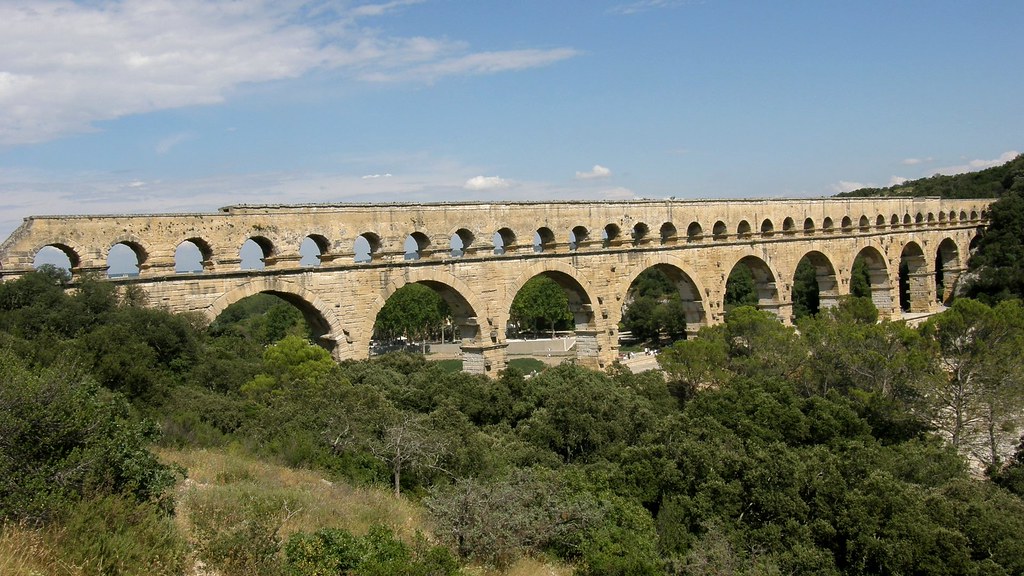
Image source: https://search.creativecommons.org/photos/7f8b0f30-4e57-4f37-9b73-f60e32abb3ea by OliBac

Image source: https://search.creativecommons.org/photos/26a18314-9264-4eb6-b145-ad2716c4aaac by budgetplaces.com
- Theatres & Amphitheatres, the Roman theatre was inspired by the Greek version, but the orchestra was made semicircular and the whole was in stone. The Romans also added a highly decorative scenic building (scaenae frons) which incorporated several tiers of columns, ledges, pediments, and statues. The Amphitheaters were used for various types of public events, the amphitheatres were circular or oval, and were used for gladiator fights, chariot races, venationes (killing of animals), and executions. About 230 Roman amphitheaters have been found throughout the area of the Roman Empire, the earliest of which date back to the mid-1st century BC, but most were built under Imperial rule, from the Augustan period (27 BC-14 AD) on. Imperial amphitheaters were built throughout the Roman empire; the largest could accommodate 40,000-60,000 spectators. The best-known amphitheater in the world is the Roman Colosseum, more correctly called the Flavian amphitheater (Amphitheatrum Flavium), from the name of the Flavian dynasty that built it.
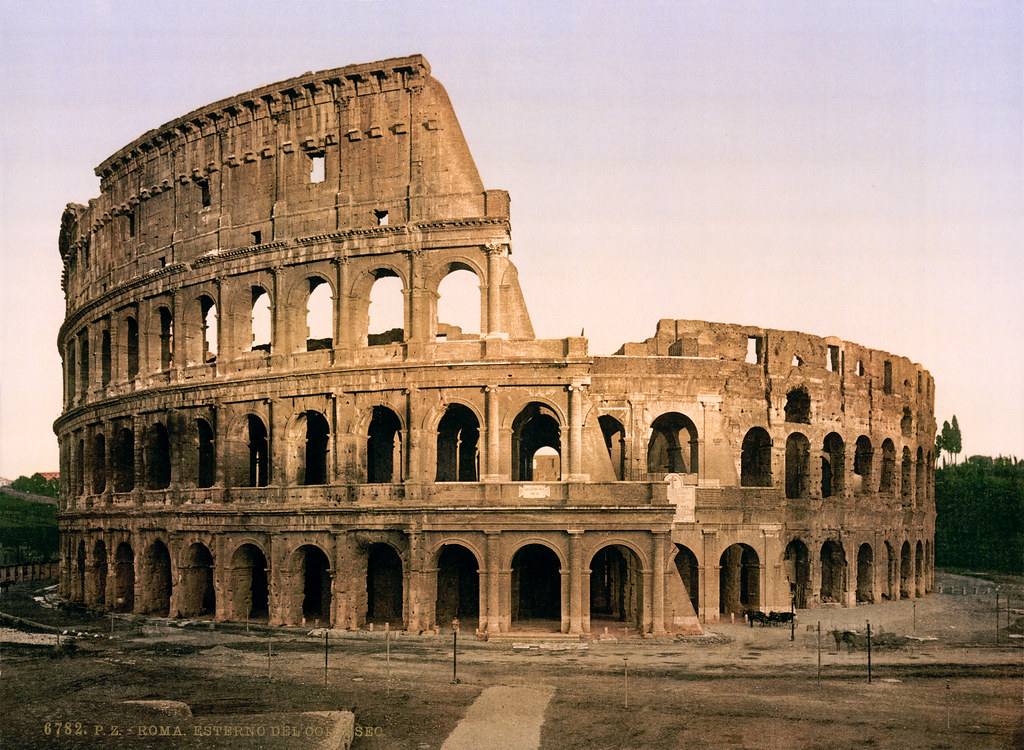
Image source: https://search.creativecommons.org/photos/0f0c3e34-7d04-489e-81e1-497896085dbb by trialsanderrors
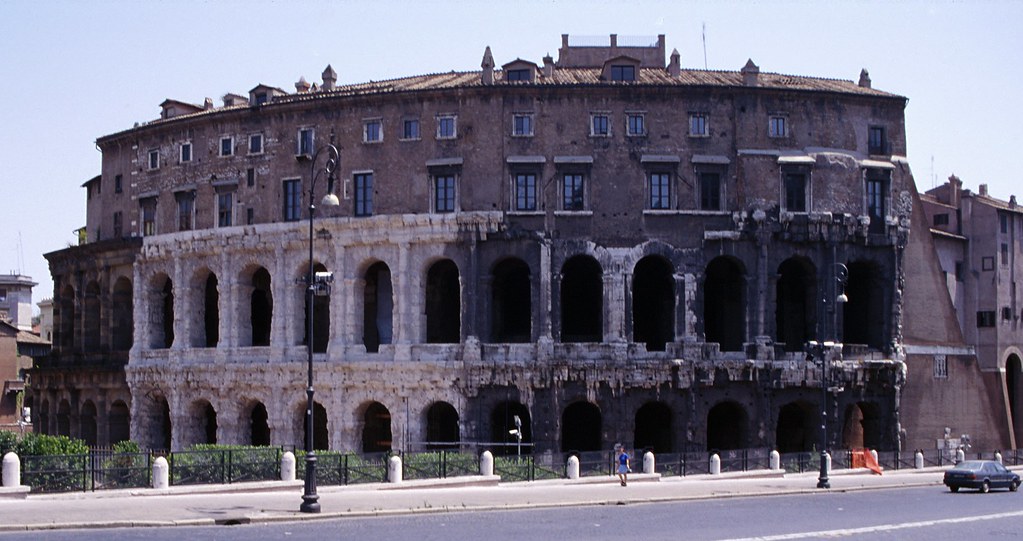
Image source: https://search.creativecommons.org/photos/0a7399d3-4c40-4520-b0a9-aff357a402d8 by TyB
- Triumphal Arches, the triumphal arch, with single, double, or triple entrance, had the sole function of commemorating significant events such as military victories in sculpture and inscription. The earliest examples were located above the road arteries– the earliest are the two arches built by L.Stertinius in Rome (196 BCE) – but later examples were often protected by steps. Topped by a four-horse bronze chariot, they became impressive stone monuments to Roman vanity. The Arch of Constantine (c. 315 CE) in Rome is the greatest surviving example and is perhaps the last great monument of Imperial Rome.
-

Arch of Titus, Rome.
Images source:https://search.creativecommons.org/photos/db2f3e3a-47d2-45dd-b177-b9f156830b08 by Alexander Z.
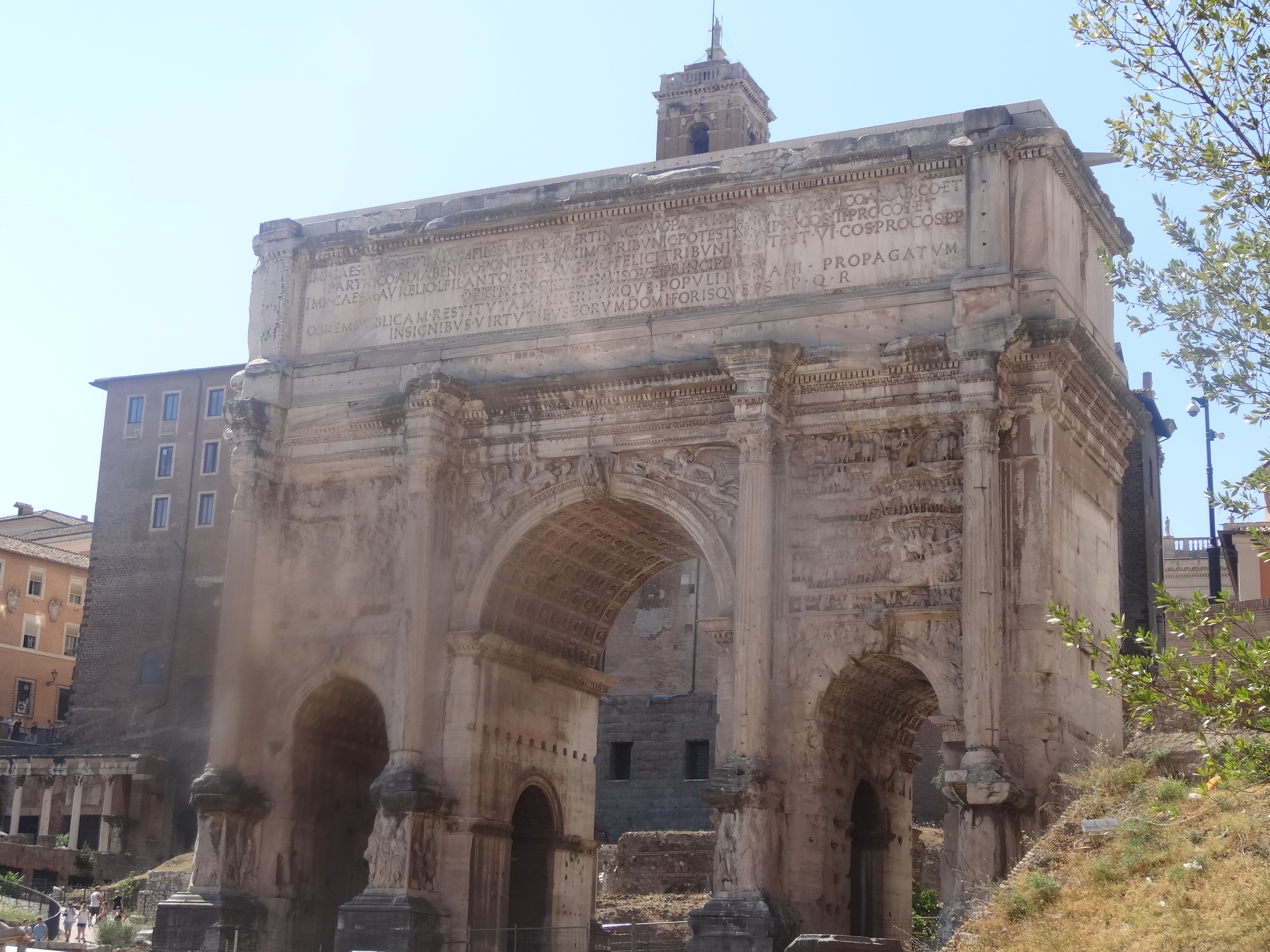
Images source: https://search.creativecommons.org/photos/821c3b31-8b01-4743-a504-eb8941a3f493 by Jordiferrer

Images source: https://search.creativecommons.org/photos/702ff736-dc31-4f48-ae1f-40c1c07e1250 by Charlie Phillips
The Round Arch in the world
The Romans were the first to build large and lasting bridges. The testament of the construction techniques of Ancient Rome can be witnessed today with hundreds of bridges still standing.
- Croatia, in the eastern suburb of Salona, ran the Urbs vetus, the westernmost backwater of the Jadro (the ancient Salon). In the 1st century BC it was crossed by a five-arch bridge supported by massive pillars. It was built with finely chiseled stone blocks arranged regularly and bonded with mortar. The bridge was located on an important regional road which was a continuation of the main communication route of the old city, the decumanus maximus.
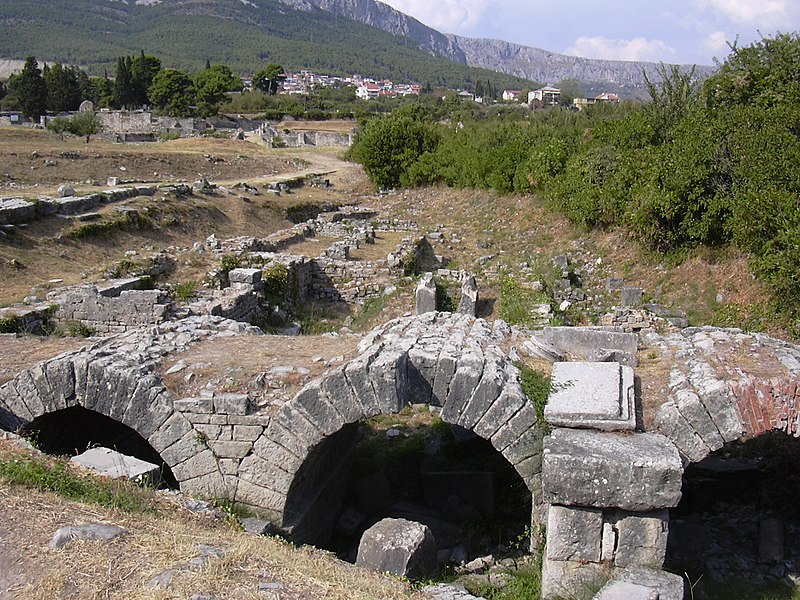
Image source: https://commons.wikimedia.org/wiki/File:Salona_aqueduct.jpg
- France, the Pont Julien, which takes its name from the nearby town of Julia Apta (modern-day Apt), is a three-arch bridge that crosses the Calavon River. Today, it is located near the city of Bonnieux. It was originally built in 3 BC on the Via Domitia, an important Roman road that connected Italy and Spain through the Roman province of Gallia Narbonensis.
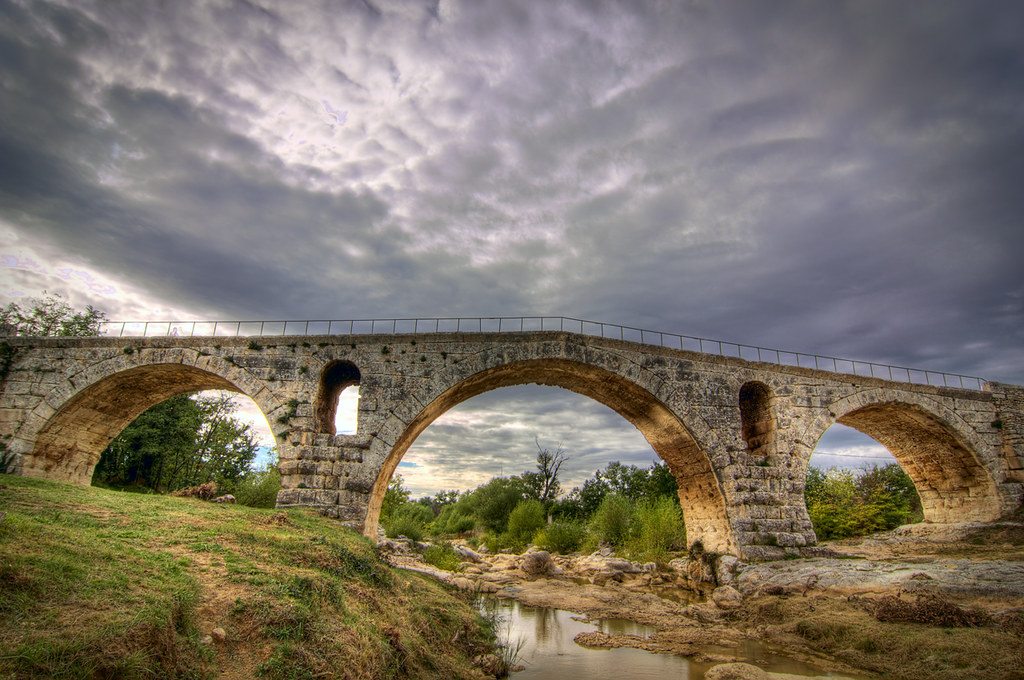
Image source: https://search.creativecommons.org/photos/33e1cadb-a815-4396-a9a3-ec570e5203ce by decar66
- Germany, the Roman Bridge in Trier spans the Moselle and is the oldest standing bridge in Germany. The nine pillars of the bridge date back to the 2nd century AD. The upper part was renovated at the beginning of the 12th and early 18th century, after having suffered destruction in the war. It is designated as part of the Roman Monuments, St. Peter’s Cathedral, and the Church of Our Lady of Trier UNESCO World Heritage Site.

Image source: https://search.creativecommons.org/photos/432fb8b9-df65-4117-bccf-ca5b7538d7dc by Following Hadrian
- Italy, the Ponte Pietra (Italian for “Stone Bridge”), once known as Pons Marmoreus, is a Roman arch bridge that crosses the Adige River in Verona. It was completed in 100 BC, and on it passed the Via Postumia from Genua to the Brenner Pass.
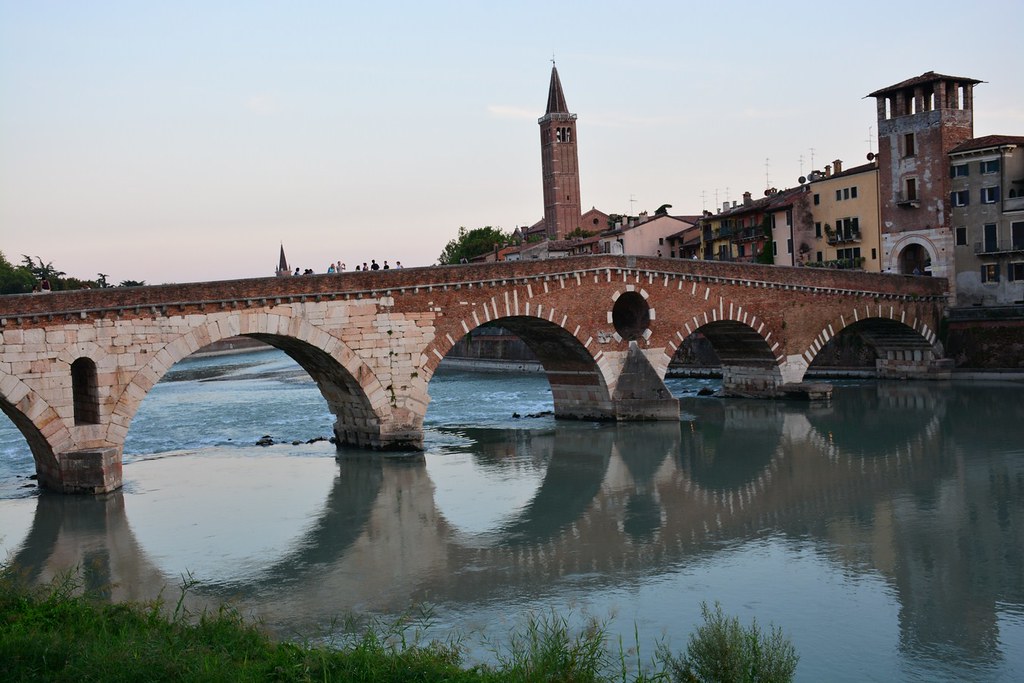
Image source: https://search.creativecommons.org/photos/c60c1e59-7225-46bc-8e6c-46ebfb1b8d6f by paularps
- Spain, the Roman bridge of Córdoba is a bridge originally built in the early 1st century BC over the Guadalquivir river, possibly replacing a previous one in wood. The bridge has since been rebuilt in various eras and most of the current structure dates back to the Moorish reconstruction in the 8th century.
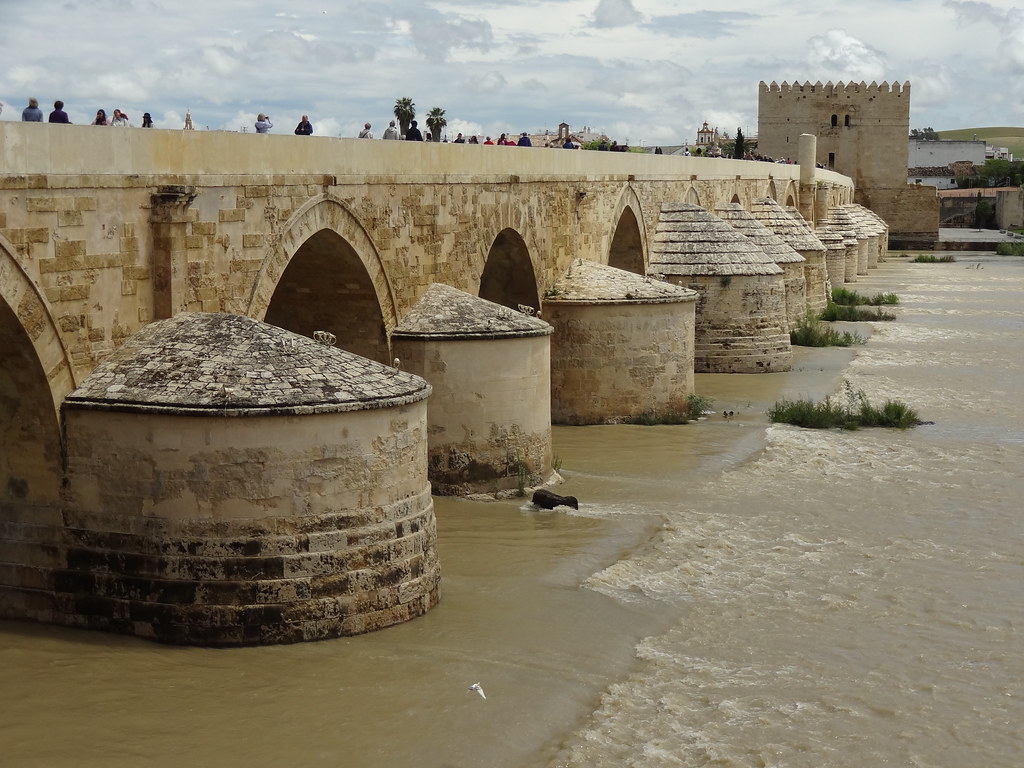
Image source: https://search.creativecommons.org/photos/19938dff-751f-4eba-96dd-c329817d62f6 by IainCameron
Info sources:
https://study.com/academy/lesson/the-roman-arch-definition-construction-history.html https://www.ancient.eu/Roman_Architecture/ https://followinghadrianphotography.com/2017/04/02/roman-bridges/
